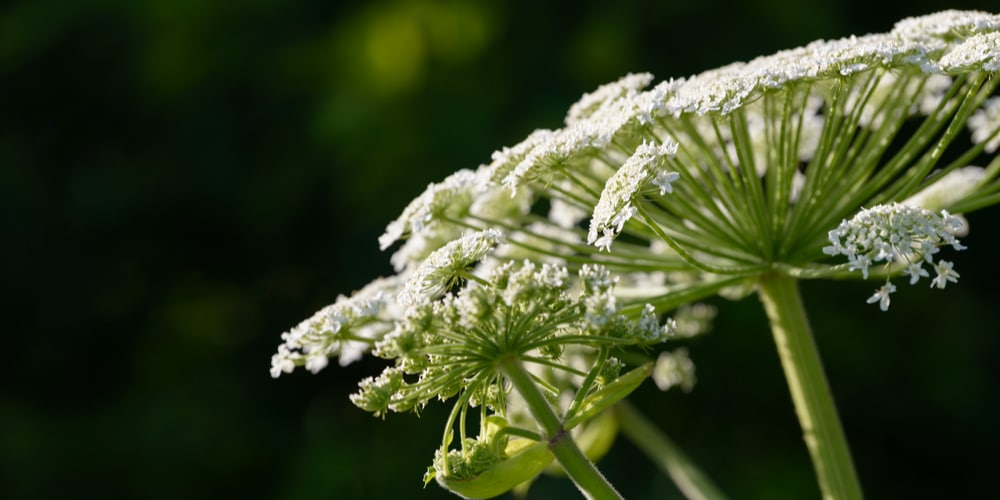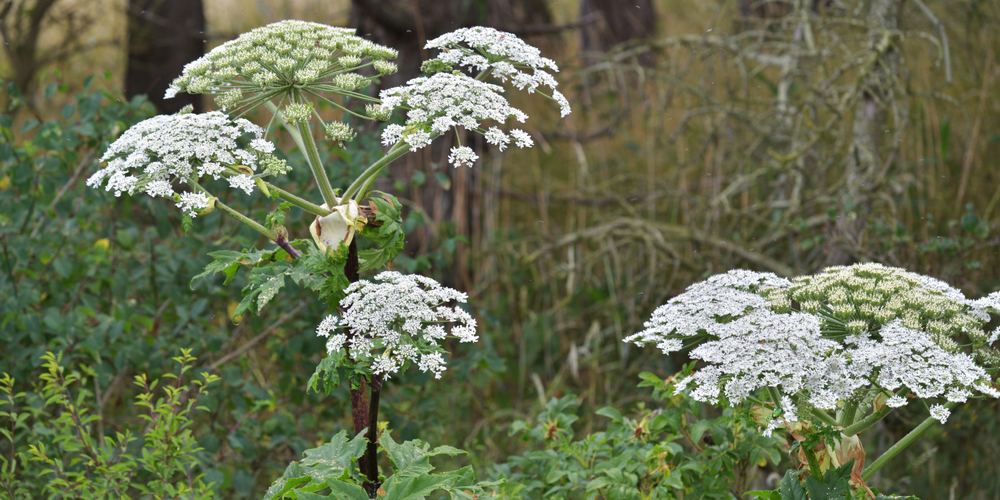While Giant Hogweed has been in New York since 1917, it only recently made its way into Long Island. Unfortunately, hogweed poses a health risk.
What Is Hogweed?
Hogweed is a plant from the carrot family. It can grow huge and release around 20,000 seeds when it flowers. This invasive plant has sap that is incredibly dangerous to us. When exposed to sunlight, it can lead to burns on our skin.
Due to its nature of rapid growth and taking up a lot of space, it can easily out-compete non-invasive and native plants. Giant Hogweed crowds out the plants around it, and its flowers disperse thousands of seeds, leading to more growth and crowding non-invasive plants.
Never touch hogweed. If its sap gets on you, immediately wash the area and avoid letting sunlight touch that area by keeping it covered for at least two days. When working with hogweed, keep your skin protected.
How To Identify Hogweed on Long Island
While there are some look-alikes, Giant Hogweed is pretty easy to identify. The hogweed look-alikes also tend to be dangerous for us, so if you see any plant that resembles Giant Hogweed, do not touch it.
As stated above, hogweed is a large plant that reaches around 14 feet tall. Its leaves are also huge, growing as large as five feet across. It has a green stem with reddish-purple splotches and thick, white hairs covering it.
Other look-alikes may have green stems with white hairs and no purple, or they could be purple with no additional features in common. Remember to look carefully but not to touch.
What To Do When You See Giant Hogweed on Long Island
When you see Giant Hogweed, you should report the sighting. If it isn’t a known location, it is vital to report this to New York’s Department of Environmental Conservation. If it grows on your property, you can remove it yourself if you take proper safety measures.
Remove Hogweed Safely
When handling hogweed, it can start to seep dangerous sap. You must avoid getting this on your skin. Wear protective gloves and clothing that covers your skin. This includes waterproof gloves, long sleeves, pants, closed-toed shoes or boots, and protective goggles to keep your eyes safe. Your clothing should not easily absorb any sap that gets on it. Try to go waterproof all over for the safest experience you can get.
When bagging this plant, use a double bag system. You should bag it again if the second bag has any sap on it. Ensure that there is no chance of being exposed to the sap from the plant.
How To Remove Giant Hogweed
There are a few possible methods for removing Giant Hogweed. Sometimes you should employ multiple at once, depending on how large your hogweed problem is. Some methods are best for smaller amounts of hogweed and are less effective on large amounts. Popular removal methods include removing the flower, using herbicides, covering it, and cutting it.
Removing the Flowers
The flower is what disperses the thousands of seeds that cause the fast spread of hogweed. One popular method of removal is to remove the heads of the flowers. Do this before the seeds are released. Make sure you wear ample protective gear while doing this to stay safe from the sap.
Cut off the flowers with sharp pruning shears and then bag them in a few trash bags. Then you can use the sun to kill the seeds. Remember to double or triple bag this and ensure there is no sap on the outside of the bags.
If there are seeds in the surrounding soil, you must remove that. This will ensure they can’t continue growing there.
Herbicides
Some herbicides stop Giant Hogweed from growing. You can combine using herbicides with other methods for the best results.
Cut the Roots, Cut the Plants, or Mow Over Them
This is where covering the plants comes into play.
One cutting method requires you to cut the roots to stop them from growing. This is good for smaller amounts and needs to be monitored and kept up to ensure it is effective. You can also cut the plants to the ground and cover the area with a tarp and mulch. In a couple of years, you should be free of hogweed.
You can also mow over the plants as long as there are no flower heads and the plants are too tall. Repeat this and check for flower heads each time you mow. Mow over them multiple times per year, and eventually, this will destroy all the plants. Ensure you don’t spread hogweed seeds with your mower when you mow other areas.
Hogweed on Long Island: The Bottom Line
Hogweed is a very distinct plant that is pretty easy to identify, although it is also very similar to hemlock. It’s also pretty easy to remove and control as long as you’re smart and safe about it while keeping an eye on things. Remember to report any hogweed you see. When you do your part, you help our non-invasive plants thrive.

